Anyone interested in trying the five-screen experiment? Then hare it is a simple diagram as the original one no longer exists on the main page due to the URL link gone missing? So I’ve looked over the original and just applied my own, hope its easy to follow and it does require several Dolby stereo Pro-Logic decoders amplifiers and more importantly matching five sets of loudspeakers, preferably JBL. 
The original article written by Norm Schneider is quite ingenious and it really does work.

Originally Posted by
JBL 4645

The Search For New Channels
Reproducing SDDS Soundtracks
Norm Schneider
Real Channels
It is interesting that many manufacturers of home theatre processors have derived additional playback channels that are really not there. By adding circuitry to pull information from sounds that momentarily travel from the screen channels to the surround channels, additional "fill‑in" material can be directed to side wall loudspeakers to give the illusion that the sound is moving from the screen, down one wall, to the left or right surround loudspeaker(s). Since home equipment is designed and built for the pleasure and satisfaction of the buyer, there is nothing wrong with this technology. In professional movie theatres, we cannot get away with these schemes because the movie producer is looking for as accurate a playback as possible. This scheme is similar to the Surround EXT" format where an additional sound channel is matrix encoded between the left and right surround channel on Dolby™ Digital or DTS Digital Surround soundtracks. The difference is that the center surround channel is a separate and discrete (real) channel added to the digital soundtrack.
There are, however, two real additional channels on many digital sound DVD discs that have gone unnoticed by these same manufacturers. Perhaps they have not discovered them or do not feel they add that much to the presentation. Before I tell you where they are and how you can retrieve them, let's talk about how some of the major digital soundtracks are prepared for theatrical release.
 The Printmaster
The 5.1 digital sound on your DVD comes from the same printmaster used by the movie companies to encode their soundtrack into each of the three digital format processes commonly used in professional cinemas. The tracks are encoded into their proprietary format by each company and released to the theatres to play back on their own brand of processors, There is no compatibility between the three professional systems, and none are c compatible with the home versions of their own systems. Dolby and DTS have higher bit rates on their home systems than the professional version so a separate encoding process is required for the DVD digital release from the original studio master recording. The encoded sound printmaster used in the production of a theatrical film cannot be moved to the home DVD release because of these compatibility issues.
Sony Dynamic Digital Sound SDDS
The one system that has no counterpart in home systems is the SDDS digital soundtrack. It can carry eight full‑range channels, or nine when the center surround channel is added using analog matrix encoding and decoding. Sony SIDDS eight‑channel soundtracks have been used in over 100 major movies, including a special mix for Star Wars: Episode I‑The Phantom Menace. A discography of the eight‑channel digital releases can be found on the Widescreen Review subscriber Web site at www.WidescreenReview.com.
Two additional channels are encoded as discrete channels for playback in motion picture theatres that are equipped with the SIDDS digital system. These separate sound channels are especially needed where there are very wide screens to avoid the holes between channels present in systems that have only three stage (screen) channels. The two additional channels are between the left loudspeaker and center, and the right loudspeaker and center. A totally panoramic stereo field is created with separate material on each of the five channels. Aseparate eight‑channel master is delivered by the studio to the SDDS folks for encoding into their process. The 4tudio may deliver a mix‑down master to the 5.1 format for use in the Dolby and DTS formats. An eight-channel master may be sent to the DVD authoring contractor for additional post production processing by those companies, or the 5.1 mixdown already contains the extra sound material.
When the eight channels are encoded into 5.1 format what happens to the two additional channels? Do they throw them away? No way! The extra channels contain separate material, such as certain instruments from the orchestra, sound effects or even dialogue. The additional tracks are commonly spread equally between the left and center channels, and the right and center channels so that nothing is missing in the playback.
What about cinemas that use the Sony SIDDS digital system that do not have five playback loudspeaker channels on stage? The Sony processor can be programmed to do an internal mix of the extra tracks. This is done during the initial setup of the equipment so that the two extra channels are divided one‑third to the center, and two‑third to each of the outside channels. The theatre can use their system in a 5.1 mode without losing any of the original recording.
The use of five full‑range stage channels is not new. The original Todd‑AO magnetic 70mm soundtracks have five full‑range stage channels and one surround channel. It was common practice during the 50's and 60's to also include dialogue on the extra channels. If an actor moved from the center of the screen to full left, while talking, the sound would pass from the center loudspeaker to the left extra, to the left. That is rarely done today. Dialogue is "nailed" to the center channel no matter where the actor is standing in the picture. One reason for adopting a hard center dialogue channel is that cinema systems were not equalized 40 years ago and the characteristics of the voice could change as the actor moved between channels. Also the traveling voice was more difficult to reproduce in auditoriums with less than ideal acoustics. In great movies like Oklahoma, South Pacific, and others, do they throw away these channels in the DVD mix? Not at all! They are simply spread into the lesser 5.1 format stage channels. It is common for old timers to brag about how great the original Todd‑AO format was in movie theatres and wish it would come back. If these channels are really there, how can you retrieve them to play in your home theatre system?
How To Retrieve The SDDS Soundtrack
Several months ago we conducted experiments in our listening room at SMART Theatre Systems using a DTS professional cinema digital processor and the soundtrack of Godzilla originally recorded in the SDDS eight‑channel format. The analog outputs of the 5.1 processor were connected to two of the SMART' CS‑3X Jr. home theatre decoders. One between the center and right channels, and the other between the center and left screen channels. The listeners were completely amazed! Separate and distinct material was coming from the additional loudspeakers that were not duplicated on the main channels. The soundfield was totally panoramic with no gaps between the channels. (Please keep in mind that the outputs of the digital processor are analog, not digital.) At this point, a matrix steering device can detect common "in‑phase" material and direct it to a separate amplifier and loudspeaker.
We next previewed a DTS DVD of The Shadow, which was not recorded in eight-channels. The common mode material was again steered to our extra channels providing a bigger, more panoramic soundfield. Sounds that are panned from one channel to another will also appear momentarily in the new channels as the sound moves across the stage. Other movies also had pleasant surprises. Previously hidden material appeared on our new LE (left extra) and RE (right extra) channels. The sound coincides exactly with the action on the screen. Even though the early Todd‑AO 70mm soundtracks used the five full‑range stage channels, we cannot be sure the DVD author placed the tracks in the same place during mixdown to 5.1 digital. However, it should be fun to go through your library of DVD movies and see how many contain the extra "phantom" channels‑between‑channels.
Obviously we used our own CS‑3X Jr. matrix decoders that employ the patented Circle Surround™ process. This product is very similar to the model we manufacture for
movie theatres and is marketed to home theatre customers to produce the center surround channel in their playback system. It is, in fact, a full 5.1 analog matrix decoder and is ideal for decoding the PCM LT (left total) and RT (right total) outputs of your DVD player (for those of you who do not have a digital decoder). Another fine matrix decoder using Circle Surround is manufactured by Parasound. We do not believe you will get satisfactory results using products that incorporate a Dolby Pro Logic8 matrix decoder due to the well‑known and widely published quirks of that type of system. Since this experiment is all for fun anyway, you may want to play with various matrix decoders to hear the results.
It Takes TWO To Tango!
You must have two matrix decoder boxes that can be connected to your digital sound decoder. The first matrix is connected to the outputs of the left and center channels of your digital decoder or processor. This will produce a NEW left extra channel when material is present on the soundtrack. The matrix box has two inputs, but multiple outputs. The labeling may be confusing on the CS‑3X Jr. because the product is marketed to extract a center surround channel. Really, it is a high‑quality matrix decoder that may be used for several applications. Please refer to the wiring diagram for connection ideas.
If you wish to experiment with inexpensive matrix decoders, you will soon discover that you wind up with two center channel outputs, one from each box. (Pick either one to feed the center channel in your system; they are the same material.)
Now that the "cat is out of the bag," you may see future home theatre processors that can retrieve the extra channels. But for now a simple matrix decoder will give you the same thrill. This could be of some benefit if you have a large screen in your home theatre, or you are sitting close to the screen and can hear the "holes" in the 5.1 playback.
If you enjoy experimenting, play some of the original Todd‑AO movies (Around The World In 80 Days, Sound Of Music, Mad, Mad, Mad World), all the Cinerama movies, and many other early 70mm titles. The practice of using five full‑range stage channels was stopped in the late 1970s when the left extra and right extra channels were used only to add extra bass to the sound presentation. Since it is possible to modulate a magnetic channel to only 100 percent, you need to add more bass‑only channels to get more acoustic bass in the room during loud sound passages. This technique was affectionately called "Baby Boom." The digital soundtracks of today have a separate low frequency effects subwoofer channel to supplement the bass.
DVD’s that were mixed from an eight-channel source will definitely contain the extra sound channels. Can you count on the mixer of the DVD digital soundtrack to put the additional channels equally between the left and center or right and center channels? Not always, but it is fun to find these little "gems" in many commercially released DVD’s. If you are a home theatre experimenter, this could be a lot of fun. Big hint‑U‑571.
Norm Schneider is President of SMART Theatre Systems.
Circle Surround is a registered trademark of SRS Labs, Santa Ana, California.
Pro Logic and Surround EX are trademarks of Dolby Laboratories, San Francisco, California.
Reprinted with permission from WIDESCREEN REVIEW Magazine - ISSUE 59
The Printmaster
The 5.1 digital sound on your DVD comes from the same printmaster used by the movie companies to encode their soundtrack into each of the three digital format processes commonly used in professional cinemas. The tracks are encoded into their proprietary format by each company and released to the theatres to play back on their own brand of processors, There is no compatibility between the three professional systems, and none are c compatible with the home versions of their own systems. Dolby and DTS have higher bit rates on their home systems than the professional version so a separate encoding process is required for the DVD digital release from the original studio master recording. The encoded sound printmaster used in the production of a theatrical film cannot be moved to the home DVD release because of these compatibility issues.
Sony Dynamic Digital Sound SDDS
The one system that has no counterpart in home systems is the SDDS digital soundtrack. It can carry eight full‑range channels, or nine when the center surround channel is added using analog matrix encoding and decoding. Sony SIDDS eight‑channel soundtracks have been used in over 100 major movies, including a special mix for Star Wars: Episode I‑The Phantom Menace. A discography of the eight‑channel digital releases can be found on the Widescreen Review subscriber Web site at www.WidescreenReview.com.
Two additional channels are encoded as discrete channels for playback in motion picture theatres that are equipped with the SIDDS digital system. These separate sound channels are especially needed where there are very wide screens to avoid the holes between channels present in systems that have only three stage (screen) channels. The two additional channels are between the left loudspeaker and center, and the right loudspeaker and center. A totally panoramic stereo field is created with separate material on each of the five channels. Aseparate eight‑channel master is delivered by the studio to the SDDS folks for encoding into their process. The 4tudio may deliver a mix‑down master to the 5.1 format for use in the Dolby and DTS formats. An eight-channel master may be sent to the DVD authoring contractor for additional post production processing by those companies, or the 5.1 mixdown already contains the extra sound material.
When the eight channels are encoded into 5.1 format what happens to the two additional channels? Do they throw them away? No way! The extra channels contain separate material, such as certain instruments from the orchestra, sound effects or even dialogue. The additional tracks are commonly spread equally between the left and center channels, and the right and center channels so that nothing is missing in the playback.
What about cinemas that use the Sony SIDDS digital system that do not have five playback loudspeaker channels on stage? The Sony processor can be programmed to do an internal mix of the extra tracks. This is done during the initial setup of the equipment so that the two extra channels are divided one‑third to the center, and two‑third to each of the outside channels. The theatre can use their system in a 5.1 mode without losing any of the original recording.
The use of five full‑range stage channels is not new. The original Todd‑AO magnetic 70mm soundtracks have five full‑range stage channels and one surround channel. It was common practice during the 50's and 60's to also include dialogue on the extra channels. If an actor moved from the center of the screen to full left, while talking, the sound would pass from the center loudspeaker to the left extra, to the left. That is rarely done today. Dialogue is "nailed" to the center channel no matter where the actor is standing in the picture. One reason for adopting a hard center dialogue channel is that cinema systems were not equalized 40 years ago and the characteristics of the voice could change as the actor moved between channels. Also the traveling voice was more difficult to reproduce in auditoriums with less than ideal acoustics. In great movies like Oklahoma, South Pacific, and others, do they throw away these channels in the DVD mix? Not at all! They are simply spread into the lesser 5.1 format stage channels. It is common for old timers to brag about how great the original Todd‑AO format was in movie theatres and wish it would come back. If these channels are really there, how can you retrieve them to play in your home theatre system?
How To Retrieve The SDDS Soundtrack
Several months ago we conducted experiments in our listening room at SMART Theatre Systems using a DTS professional cinema digital processor and the soundtrack of Godzilla originally recorded in the SDDS eight‑channel format. The analog outputs of the 5.1 processor were connected to two of the SMART' CS‑3X Jr. home theatre decoders. One between the center and right channels, and the other between the center and left screen channels. The listeners were completely amazed! Separate and distinct material was coming from the additional loudspeakers that were not duplicated on the main channels. The soundfield was totally panoramic with no gaps between the channels. (Please keep in mind that the outputs of the digital processor are analog, not digital.) At this point, a matrix steering device can detect common "in‑phase" material and direct it to a separate amplifier and loudspeaker.
We next previewed a DTS DVD of The Shadow, which was not recorded in eight-channels. The common mode material was again steered to our extra channels providing a bigger, more panoramic soundfield. Sounds that are panned from one channel to another will also appear momentarily in the new channels as the sound moves across the stage. Other movies also had pleasant surprises. Previously hidden material appeared on our new LE (left extra) and RE (right extra) channels. The sound coincides exactly with the action on the screen. Even though the early Todd‑AO 70mm soundtracks used the five full‑range stage channels, we cannot be sure the DVD author placed the tracks in the same place during mixdown to 5.1 digital. However, it should be fun to go through your library of DVD movies and see how many contain the extra "phantom" channels‑between‑channels.
Obviously we used our own CS‑3X Jr. matrix decoders that employ the patented Circle Surround™ process. This product is very similar to the model we manufacture for
movie theatres and is marketed to home theatre customers to produce the center surround channel in their playback system. It is, in fact, a full 5.1 analog matrix decoder and is ideal for decoding the PCM LT (left total) and RT (right total) outputs of your DVD player (for those of you who do not have a digital decoder). Another fine matrix decoder using Circle Surround is manufactured by Parasound. We do not believe you will get satisfactory results using products that incorporate a Dolby Pro Logic8 matrix decoder due to the well‑known and widely published quirks of that type of system. Since this experiment is all for fun anyway, you may want to play with various matrix decoders to hear the results.
It Takes TWO To Tango!
You must have two matrix decoder boxes that can be connected to your digital sound decoder. The first matrix is connected to the outputs of the left and center channels of your digital decoder or processor. This will produce a NEW left extra channel when material is present on the soundtrack. The matrix box has two inputs, but multiple outputs. The labeling may be confusing on the CS‑3X Jr. because the product is marketed to extract a center surround channel. Really, it is a high‑quality matrix decoder that may be used for several applications. Please refer to the wiring diagram for connection ideas.
If you wish to experiment with inexpensive matrix decoders, you will soon discover that you wind up with two center channel outputs, one from each box. (Pick either one to feed the center channel in your system; they are the same material.)
Now that the "cat is out of the bag," you may see future home theatre processors that can retrieve the extra channels. But for now a simple matrix decoder will give you the same thrill. This could be of some benefit if you have a large screen in your home theatre, or you are sitting close to the screen and can hear the "holes" in the 5.1 playback.
If you enjoy experimenting, play some of the original Todd‑AO movies (Around The World In 80 Days, Sound Of Music, Mad, Mad, Mad World), all the Cinerama movies, and many other early 70mm titles. The practice of using five full‑range stage channels was stopped in the late 1970s when the left extra and right extra channels were used only to add extra bass to the sound presentation. Since it is possible to modulate a magnetic channel to only 100 percent, you need to add more bass‑only channels to get more acoustic bass in the room during loud sound passages. This technique was affectionately called "Baby Boom." The digital soundtracks of today have a separate low frequency effects subwoofer channel to supplement the bass.
DVD’s that were mixed from an eight-channel source will definitely contain the extra sound channels. Can you count on the mixer of the DVD digital soundtrack to put the additional channels equally between the left and center or right and center channels? Not always, but it is fun to find these little "gems" in many commercially released DVD’s. If you are a home theatre experimenter, this could be a lot of fun. Big hint‑U‑571.
Norm Schneider is President of SMART Theatre Systems.
Circle Surround is a registered trademark of SRS Labs, Santa Ana, California.
Pro Logic and Surround EX are trademarks of Dolby Laboratories, San Francisco, California.
Reprinted with permission from WIDESCREEN REVIEW Magazine - ISSUE 59
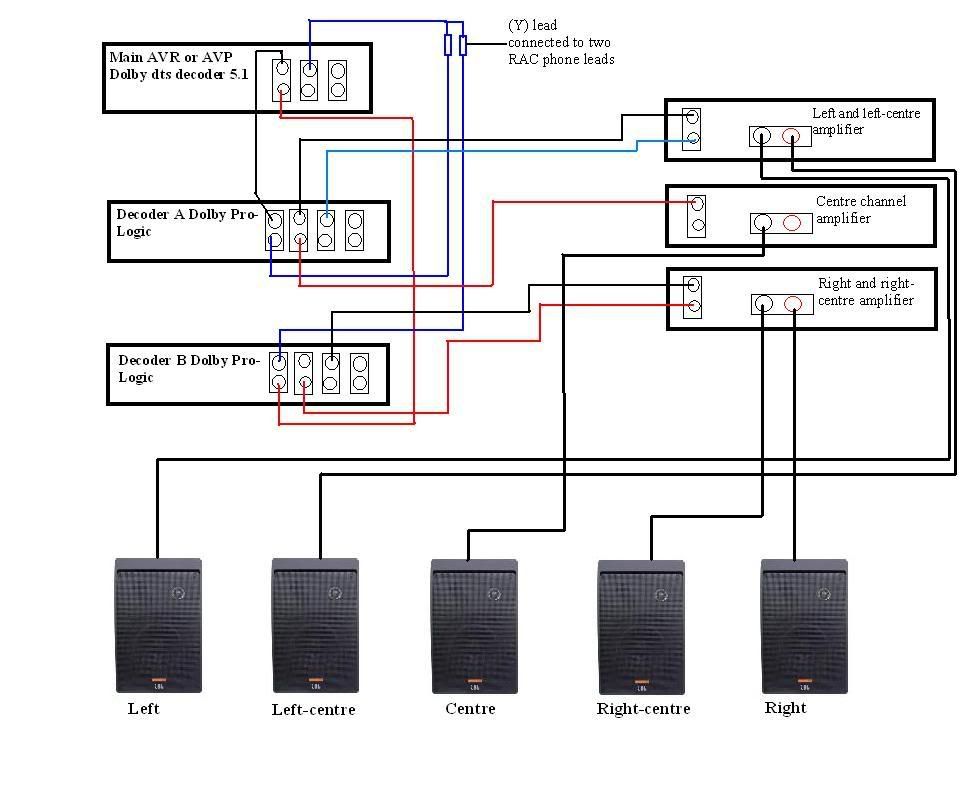
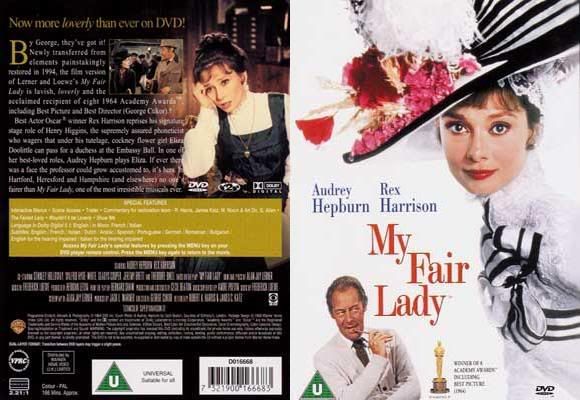
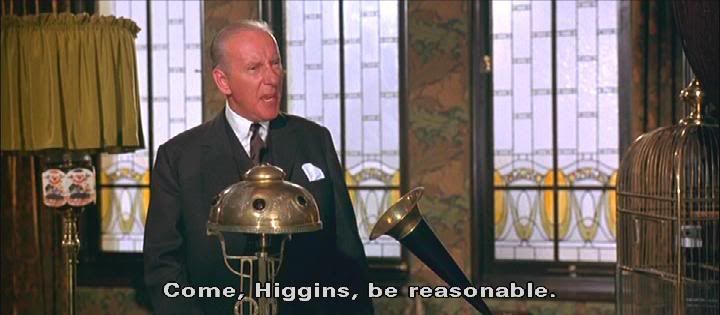
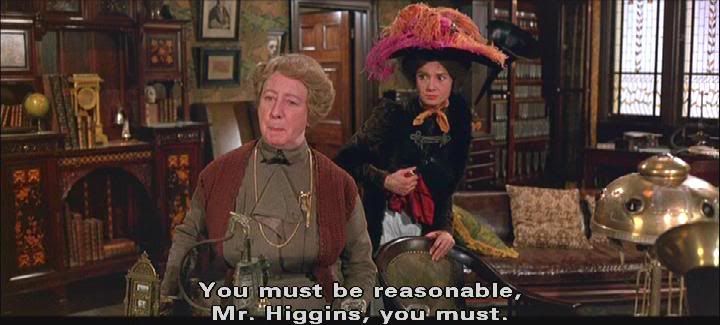
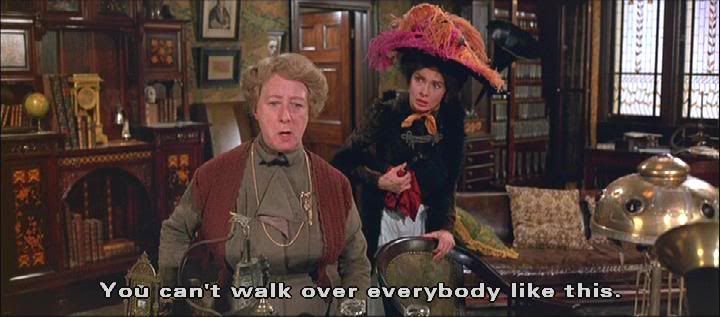
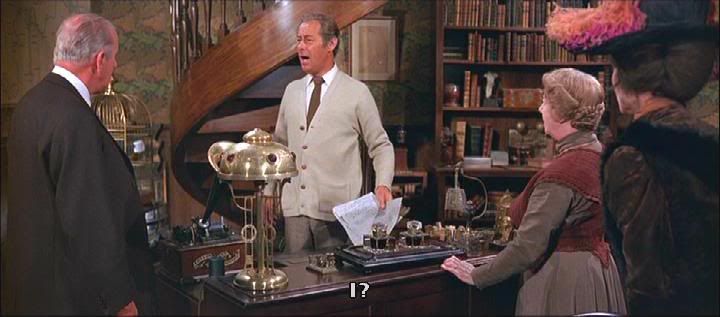
Dialogue spoken in “My Fair Lady” (1964-1994) has Mrs. Pearce and Pickering voices heard more or less in-between left and centre while Higgins voice “I” walk over everybody is heard in the centre front, at present with the current set-up.
With the camera moving from different positions the continuity of sound and image is nicely placed
Here are a few that I have collected on the DVD and laserdisc format
1 The King and I (1956) DVD
2 Forbidden Planet (1956) DVD
3 South Pacific (1958) DVD
4 Spartacus (1960) DVD
5 West Side Story (1961) laserdisc DVD
6 Lawrence of Arabia (1962) DVD
7 My Fair Lady DVD (1964)
8 Doctor Zhivago DVD
9 The Sound of Music (1965) DVD
10 2001: A Space Odyssey (1968) laserdisc and DVD
11 Ice Station Zebra (1968) DVD
12 The Towering Inferno (1974) DVD
13 The Spy Who Loved Me (1977) DVD remixed for DVD
14 Close Encounters of the Third Kind (1977) laserdisc DVD
15 Superman the movie (1978) first edition VHS PAL transferred to DVD-RW
16 Alien (1979) laserdisc DVD
17 Indiana Jones and the Temple of Doom (1984) laserdisc DVD
18 Willow (1988) DVD
19 Indiana Jones and the Last Crusade (1989) laserdisc DVD
20 The Abyss (1989) DVD
21 Star Trek V: The Final Frontier (1989)
22 Terminator 2: Judgment Day (1991) laserdisc DVD
23 Backdraft 1991DVD
24 Hook (1991) DVD
25 Toy Story (1995) laserdisc
26 Mission to Mars (2000) DVD
27 Monster’s Inc (2001) DVD













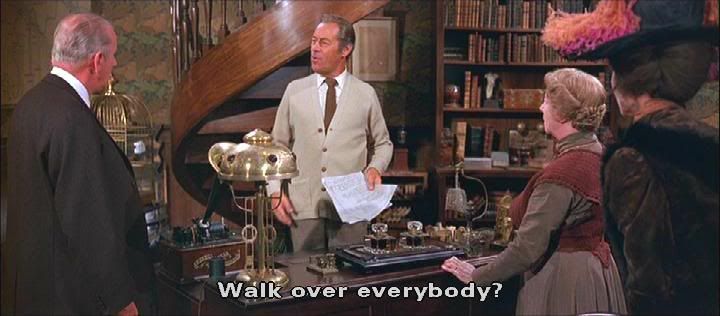
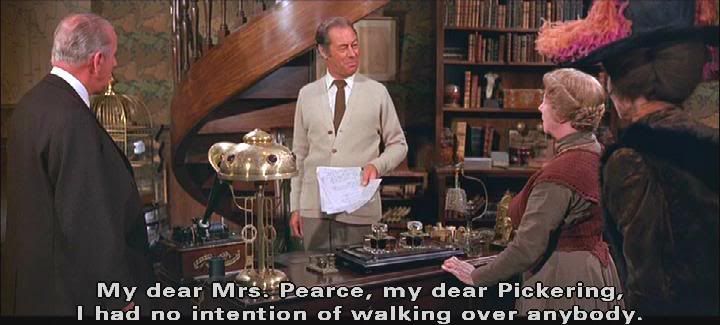

 Reply With Quote
Reply With Quote